Located in East Cowes on the Isle of Wight, Osborne House was one of Queen Victoria’s favourite royal palaces. It is now owned by English Heritage and open to the public.
While our daughter F and her friend D stayed in Sandown, S and I decided to pay a visit to the home of Queen Victoria. When we arrived, we began to appreciate how vast the estate is. After navigating our way out of the car park, there were numerous paths leading to various locations other than Osborne House itself.
Rain was forecast later in the day so we thought we’d do the outdoor bits first. We took a walking trail to the Royal Beach – of course the queen had a private beach at the end of her garden!
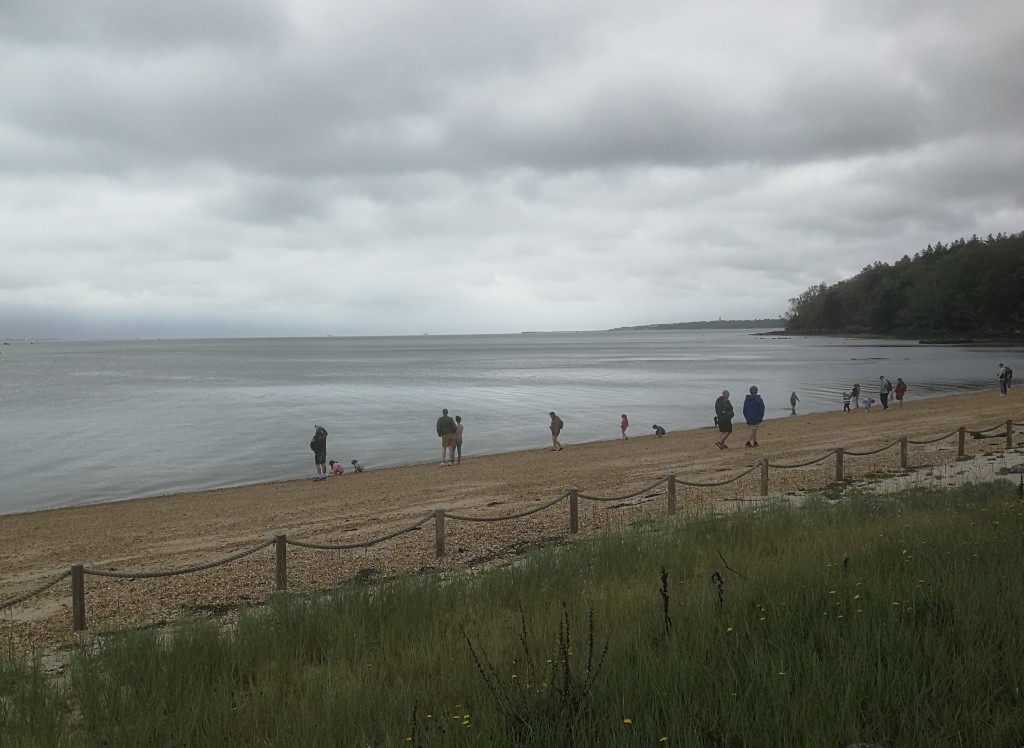
The first thing we noticed was a bathing machine. In the 19th century, it was typical of aristocratic ladies to use a horse drawn bathing machine to take them into the sea. They would change inside to preserve their modesty – although Victorian swimming costumes were extremely modest by today’s standards.
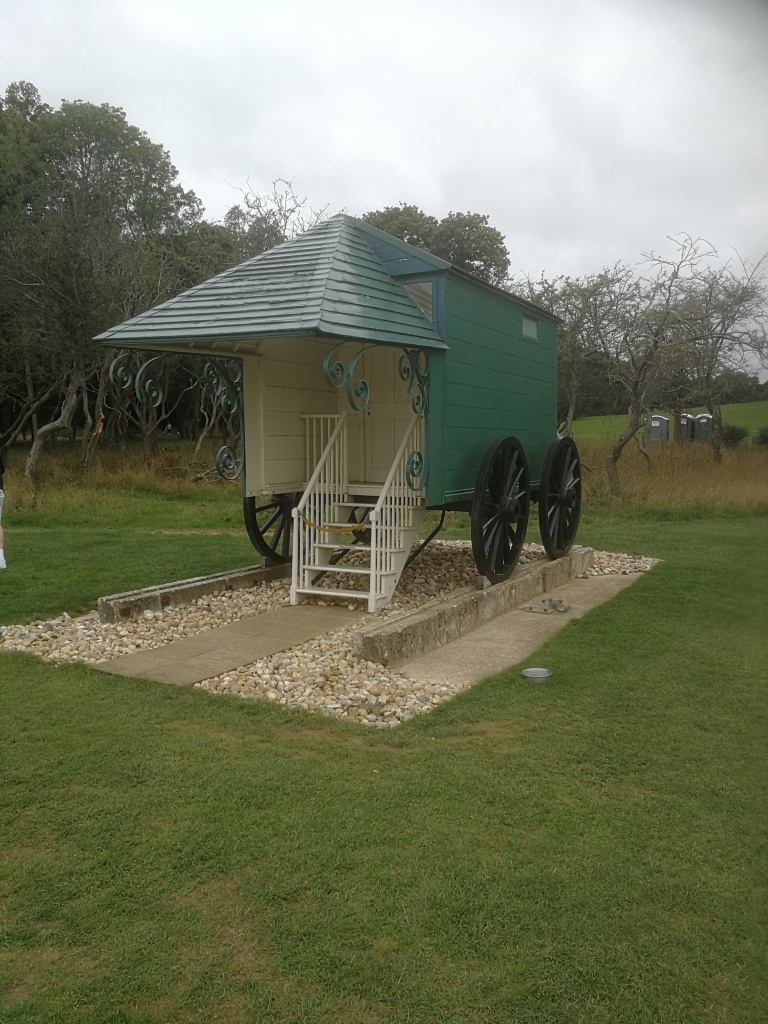
This bathing machine was built for Victoria in 1846. As well as a changing room, it has a WC inside. After her death, amazingly it was used as a chicken shed but in 1951 it was restored to its original state.
We walked up a grand path towards the house through grass and woodlands. Enroute, we passed the tallest Monterey Cyprus in the Isle of Wight, planted by Prince Albert in the early 1850s. Albert took a keen interest in the gardens and much of the planting today follows his designs.
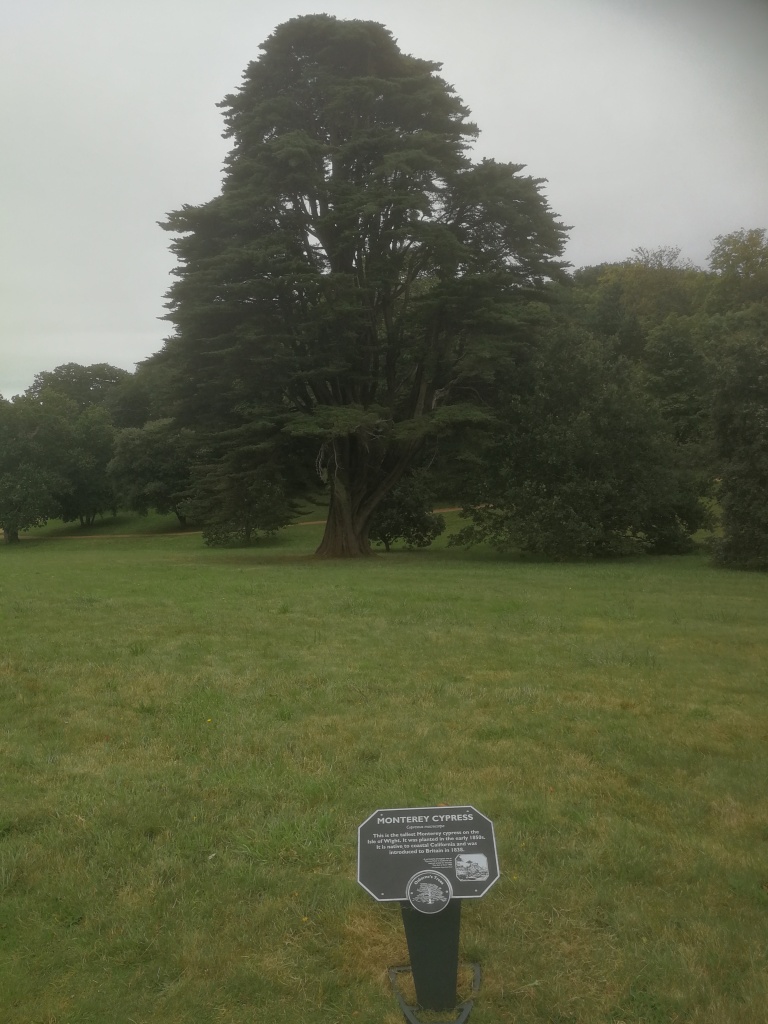
Before long, we arrived at the Queen’s palatial home.
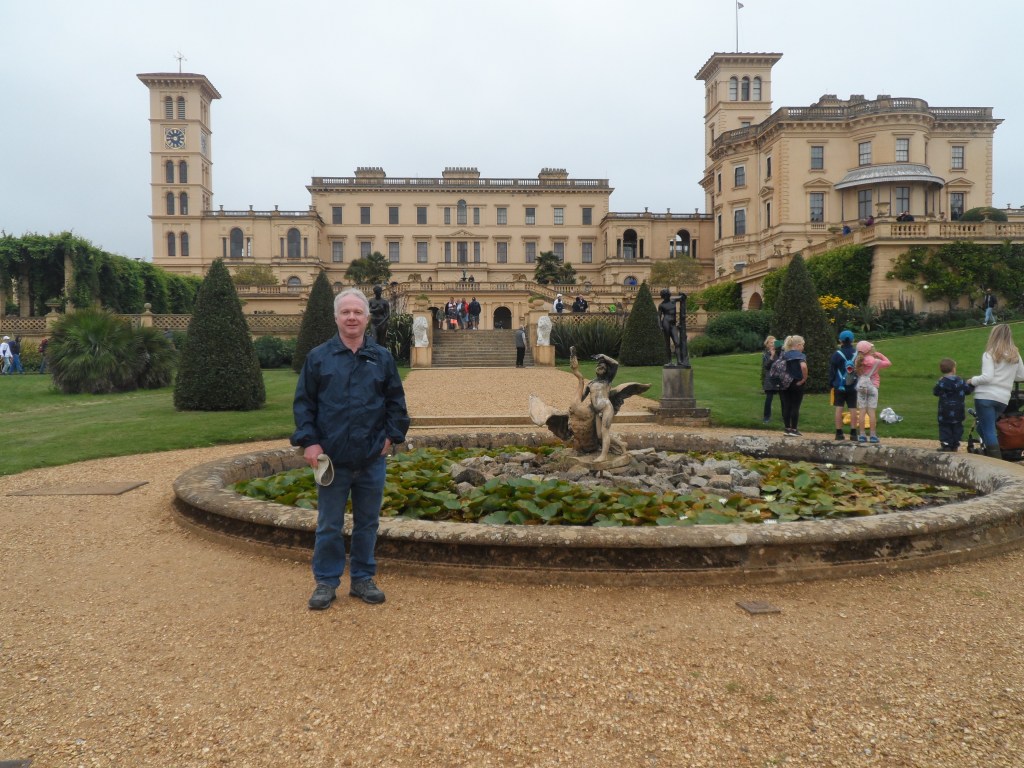
Queen Victoria acquired the estate in 1845 and the new mansion was built in the Italianate style, very much influenced by her husband Prince Albert. The Queen used Osborne for more than 50 years.
It took us a while to find the entrance as we had arrived on the opposite side of the house, having come from the beach. After walking through a few corridors and up some steps, S and I found ourselves in the drawing room. It was arranged in an L shape, with a billiard table in one section and a seating area around the corner. This was so that the men could play billiards after dinner without being rude to the Queen by going to a different room.
Above the Queen and Prince’s apartments was the Nursery Suite. It included the children’s quarters, a schoolroom, a kitchen and governesses’ rooms.
In the Queen’s Sitting Room, Victoria worked on state papers with Albert acting as her private secretary. It was also used for informal family gatherings.
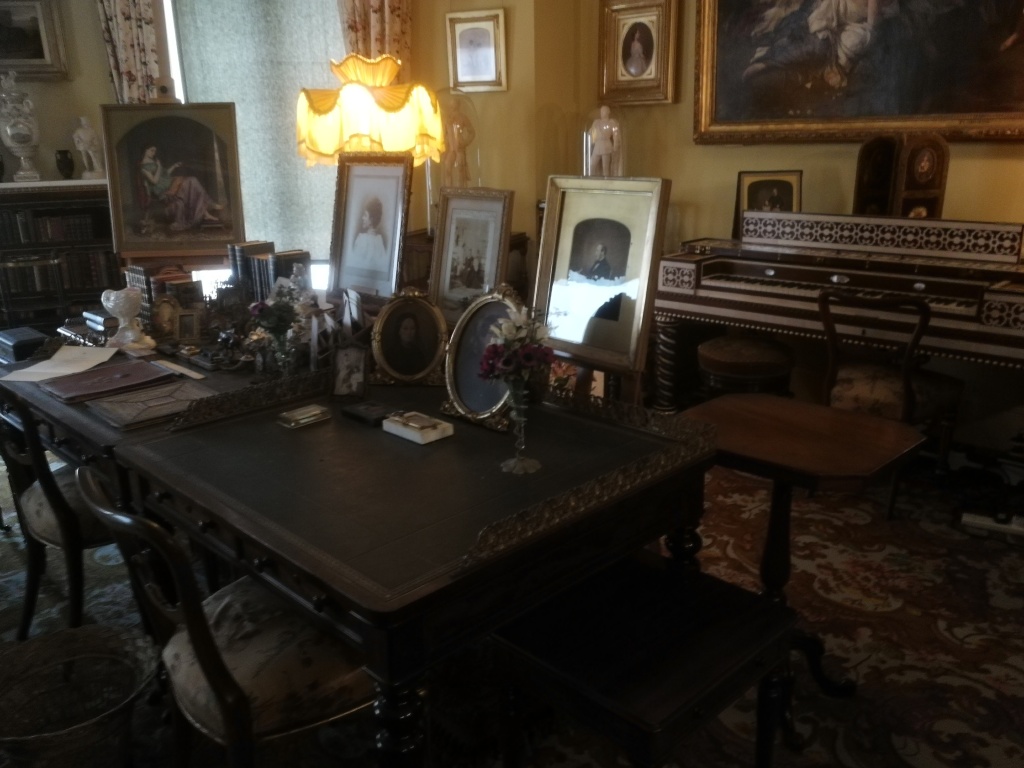
Hallways were decorated with a mixture of classical artworks and information boards, telling of life at Osborne and some of the characters known to the queen. Portraits of Indian craftsmen and Maharajahs lined one corridor, reminding us that Victoria controversially held the title of “Empress of India”. We saw the influence of some of these craftsmen in the Durbar Room. Durbar is an Indian word for “state reception” and also the hall in which such gatherings took place. Elaborately decorated in Indian style, the room was used for banquets and even had a minstrels’ gallery, as mediaeval banqueting halls would have done.
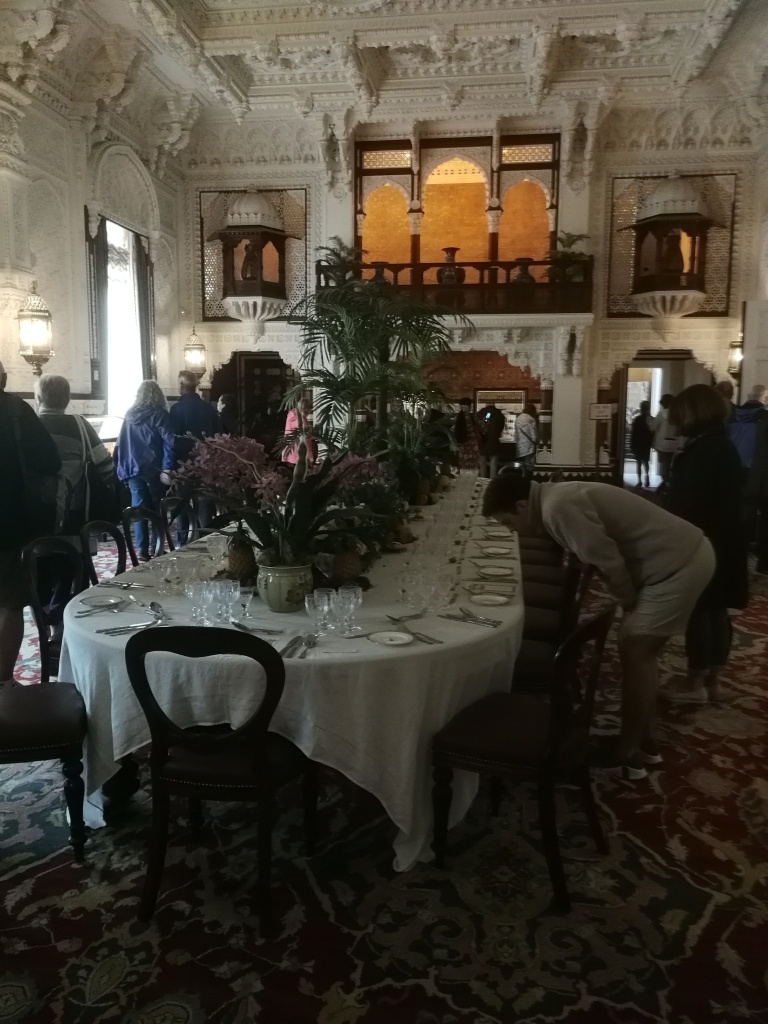
The importance of Osborne to national political life can be seen in the Council Room and the Audience Room. The Privy Council – a body of advisors to the Sovereign made up of senior politicians – met in the former, while the Queen received visiting Heads of State in the latter.
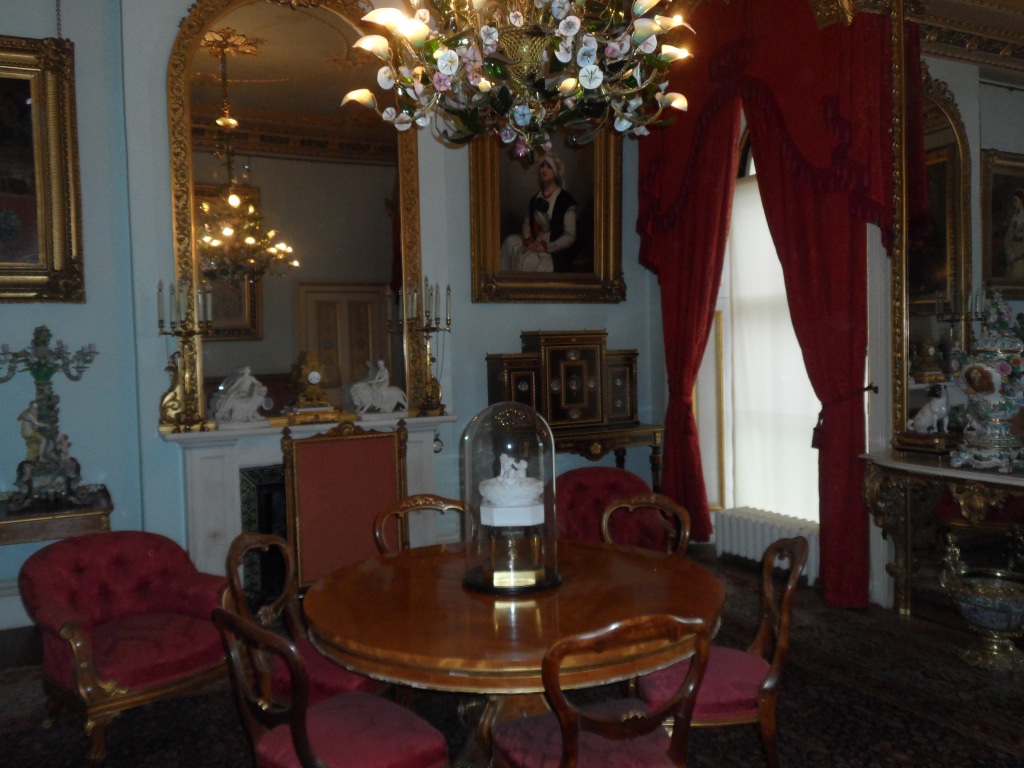
S and I passed through many other rooms, but perhaps the most poignant was the Queen’s Bedroom. It was here that Victoria died aged 81on 22 January 1901. Next to her bed can be seen a portrait of Prince Albert, whom she outlived by 39 years. At 63 years, she was the longest serving British monarch until Queen Elizabeth 2nd.
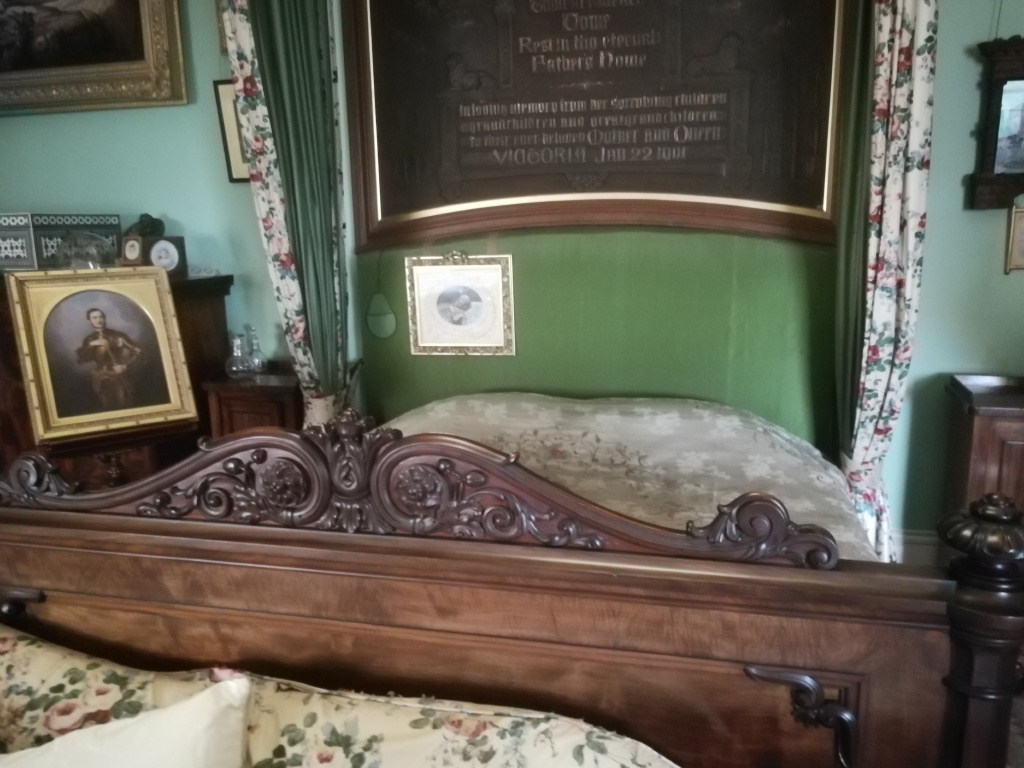
We left Osborne House via the obligatory giftshop and café. It was a lot to take in, that this corner of a small island off the south coast of England was one of Queen Victoria’s favourite places and played host to so many affairs of state. It was a highly enjoyable and interesting day out.
Factfile:
Location
Osborne House is in East Cowes, Isle of Wight, off the south coast of Hampshire, England, UK.
Transport
Car ferries arrive at East Cowes from the mainland port of Southampton. Osborne House is 1 mile from the ferry terminal. Southampton is 76 miles south-west of London. Ferries also run from Portsmouth to Fishbourne, which is 5 miles away
Further Information
Click the links for more information on Osborne House and the Isle of Wight

Love the bathing machine and the Minstrels Gallery. Grand day out!
LikeLiked by 1 person
It was indeed!
LikeLiked by 1 person